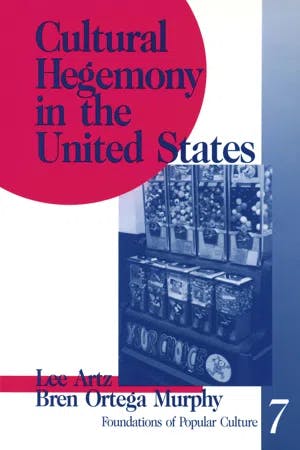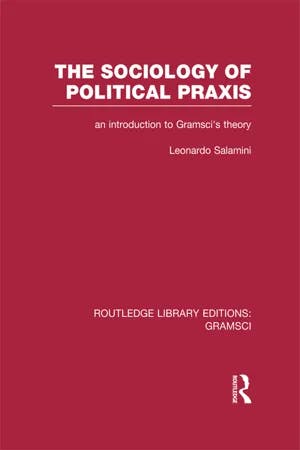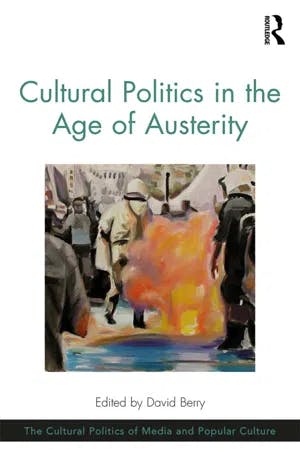What is Cultural Hegemony?
PhD, English Literature (Lancaster University)
Date Published: 14.11.2023,
Last Updated: 02.04.2024
Share this article
Definition
Whether we are aware of it or not, the culture we consume (from literature to mass media) is instrumental in establishing and maintaining social norms. Through representation (and lack of representation) our culture sets the standard for what is acceptable, normal, and desirable. It tells us which social, economic, and racial groups should be looked up to, and which should be marginalized or neglected from discourse altogether. These standards and beliefs, encoded in forms such as television, music, and literature, are designed to maintain the status quo. This concept that dominant groups wield and maintain power and influence through infiltration of our culture is known as cultural hegemony. Entertainment and news media, educational systems, and religious institutions all help preserve hegemonic power structures by inscribing, legitimizing, and reinforcing a specific set of values.
Examples of cultural hegemony at work can be seen in a range of forms, including reality television. Dating shows such as Love Island (2015–) or Married at First Sight (2014–) perpetuate gender norms and reinforce compulsory heterosexuality — as do the weddings they lead to. As Chrys Ingraham writes,
Cultural hegemony has not only permeated the domestic sphere, but also can be seen in numerous ideologies, norms, and taboos prevalent throughout Western society. Cultural hegemony can further be used to advance political or economic goals. As cultural theorist Stuart Hall writes,
The worldview of the dominant classes is seen as the only view, rather than something which has been socially constructed. The news media, according to Hall, is not a neutral source; it is shaped by and helps perpetuate the dominant view.
Dominant views transmitted through culture are a way of obtaining the consent of the population. Rather than using military force, these cultural works are designed to convince society that the dominant ideology is common sense and that there is no alternative. In Cultural Hegemony in the United States, Lee Artz and Bren A. Murphy state that,
These “common sense” beliefs, as Artz and Murphy point out, go unchallenged and, consequently, become self-fulfilling prophecies.
Cultural hegemony has been used to explain why Karl Marx’s class revolution has never fully materialized, despite overwhelming evidence that capitalism exploits the worker. Cultural hegemony has made it so the workers are not passive but rather, to an extent, agree with the principle of capitalism through their participation in it.
In this guide, we will explore the concept of cultural hegemony, from its development in fascist Italy in the 1920s to its use today as a tool to perpetuate neoliberal ideologies.
Marx, Gramsci, and hegemony
Before further exploring cultural hegemony, we need to understand the broader concept of hegemony. Hegemony refers to the dominance of ruling elites or classes through political, economic, and military power. Italian Marxist Antonio Gramsci developed the concept of hegemony in the 1920s, while he was imprisoned under Mussolini’s fascist regime. Gramsci had been a member of various socialist groups and then served as head of the Communist Party, before his arrest in 1926. Whilst imprisoned, Gramsci wrote Prison Notebooks (1929-35, [2005]), in which he discussed hegemony.
Gramsci’s writings are reflective of the political state of Italy at the time. Gramsci felt that the conditions in Italy were ideal for a communist uprising. However, this did not happen and a fascist state was established instead.
Confounded by these political events, Gramsci began to search for a reason fascism had been established in Italy, a place which was ripe for the worker’s revolution Marx had prophesied.
Gramsci blamed the ingrained, commonly held beliefs that had been embedded in the workers’ lives through education and the news. Previous revolutionaries had concentrated more on a “war of manoeuvre” (through physical insurrection) than on a “war of position” (an attempt to challenge hegemonic belief systems) (Gramsci, 1929-35, [2005]).
Gramsci’s use of the term hegemony referred to any political action or regime where one group controls (or attempts to control) another. Gramsci further stressed the cultural and moral aspects of leadership which work alongside physical force and constraint.
Gramsci builds on Marx’s concept of the base and superstructure discussed in A Contribution to the Critique of Political Economy (1859, [2011]). Whereas the base consists of the means of production, the superstructure consists of institutions such as the media, religion, cultural works, and education. Marx argues that the superstructure is where ideology is formed. For Marx, the superstructure was subordinate to the economic base. However, as Leonardo Salamini writes,
Gramsci saw the superstructure as not solely dependent upon the economic base, but enormously influential in its own right.
For Gramsci, the superstructure consists of two distinct elements: political society (which deals with forces such as the police, law, and military) and civil society (which creates cultural consensus, such as media and education). The state can enforce control through the police and the military; however, these forces are seldom called upon, or needed, due to the controlling mechanisms at work within civil society. According to Gramsci, the ruling groups in civil society establish and perpetuate their worldview, claiming that these views are, in fact, reality. As such, the dominant perspective becomes common sense; alternatives are not presented and thus seen as impossible. Any views that contradict the dominant ideology are seen as transgressive or taboo and those holding these viewpoints are marginalized from society.
Institutions within civil society, such as family and education, are key to the domination of poorer, or otherwise marginalized, groups because such operations control with consent, rather than coercion. As Richard Kilminster writes,
Consent in this case does not occur on an individual basis; instead, a group implicitly consents to the dominant ideology, as well as the political and economic structure of society, through participation. Raymond Williams further explains,
Capitalism, for example, exploits the working classes — corporations earn billions whilst paying workers minimum wage — yet the majority accepts this as “just the way things are.” Workers accept this status quo by continuing to go to work and buying into capitalism; they continue under capitalism due to a lack of perceived alternatives. In cultural works and in the media, neoliberal ideas promote the self-made millionaire and perpetuate the American Dream. Prominent cultural works promote the idea that the wealthy have aspirational lives, embedding a belief that those who have accrued significant success and wealth have done so due to their own merits and that this can be achieved by anyone. Because this has been presented as a common-sense, reasonable worldview through media and education, neoliberal policies entangled with these ideas are consented to, thus continuing to uphold dominant ideologies and existing economic and political structures.
The role of intellectuals
For Gramsci, intellectuals play a huge role in establishing hegemony, and work as intermediaries between the state and civil society. Gramsci writes,
Intellectuals are influential as their research can often shift a culture’s mindset. However, Gramsci argues that most of the information we have access to is provided by intellectuals who benefit from the dominant system which helped to elevate them to (and keep them in) their current station.
Gramsci identifies two types of intellectuals: traditional and organic. Traditional intellectuals are those who are not directly linked to the dominant forces or economic structure and perceive themselves as independent (though their participation within academia upholds the dominant system, according to Gramsci). Organic intellectuals, however, are produced by a certain class and perpetuate the values of that class or social group. Organic intellectuals differ from traditional intellectuals in their backgrounds and how they disseminate ideas. The mode of the organic intellectual consists of “active participation in practical life” (Gramsci, 2020). Contemporary organic intellectuals include figures such as Bill Gates who disseminate knowledge and ideas on a public platform and engage with wider society. This is opposed to traditional intellectuals who are seen by Gramsci to be more removed from everyday life.
Due to their background and affiliation with a lower social class, organic intellectuals are invaluable to hegemonic forces as they can work to produce dominant knowledge more effectively through their association with the working classes and their participation in “practical life”; they are trusted across classes. Though organic intellectuals uphold the status quo in many ways, Gramsci saw them as essential for counterhegemony.
Counterhegemony, according to Gramsci, involves the proletariat creating its own culture, media, and organic intellectuals which challenge dominant assumptions. These organic intellectuals would be from working-class backgrounds and be able to adequately articulate the concerns of that class. As Salamini writes,
For Gramsci, socialist revolutions are the product of a long, complex and molecular transformation of mass consciousness, the culmination of a long process of cultural emancipation of popular masses from the political and cultural hegemony of capitalist classes. (2014)
Transformation of mass consciousness can only occur, according to Gramsci, when the working classes begin to produce their own culture, free from the ideology of the capitalist state. When untethered from these influences, only then can they fully assess and critique the political and social structures within society.
Influences on postcolonial theory
Gramsci’s notion of cultural hegemony has been incredibly influential in postcolonial studies. Postcolonialism explores how colonial forces maintain their power and influence, which often occurs culturally. As Sara Salem explains,
In “Gramsci’s Relevance for the Study of Race and Ethnicity” (1986), Stuart Hall identifies Gramsci’s concept of hegemony as helping to illuminate political situations around the globe such as the South African state “forging of alliances between white ruling-class interests and the interests of white workers against blacks” and its attempts to “‘win the consent’ of certain subaltern classes and groups” (Essential Essays, Volume 2, 2018).
Branches of postcolonial thought such as Orientalism and subaltern studies are indebted to the work of Gramsci.
Edward Said, who developed the critical concept of Orientalism, argues that the West’s perception of the East (i.e., the “Orient”) as the antithesis of enlightened Europe has been perpetuated through centuries of cultural works and through academic discourse. For example, representations of the Arab in cinema, television, and literature have contributed to an ingrained image of Middle Easterners as fanatical, violent, and barbaric. This image has been used to ideologically justify prejudice, discrimination, and the occupation of the Middle East, all of which have furthered the interests of the Western elite.
Gramsci’s work surrounding cultural hegemony and the subaltern has formed the basis of subaltern studies and, as a result, the Subaltern Studies Group. Subaltern studies aim to study history “from below,” accounting for the voices of the marginalized, particularly in South Asia. Scholars in this area argue that since history is produced from a Eurocentric perspective, numerous voices are erased, and our understanding of history and culture outside of bourgeois Europe is limited. David Arnold and Ranajit Guha’s writings on the peasantry in colonial India are examples of counterhegemonic discourse.
Mass media and racist discourse
Hall explores how the news media in particular works to convey the ideological messages and agendas of those in power (i.e., the white and affluent). In “Black Men, White Media” (1974), Hall argues that racism towards Black immigrants is prevalent in the media. Hall writes,
Hall goes on to argue this discriminatory attitude can be seen in the fact that children’s television is predominantly white and that “thrillers have more stereotyped black villains and problem-families per square footage than they ought to in a society which is confronting an extremely dangerous problem” (1974, [2021]).
In a later essay, “The Whites of Their Eyes” (1981), Hall argues that the media’s representations of Black people are viewed as “common sense”:
For very complex reasons, a sort of racist “common sense” has become pervasive in our society. And the media frequently work from this common sense, taking it as their baseline without questioning it. We need, urgently, to consider ways in which, in addition to the urgent and necessary political task of blocking the path to power of the openly organized racist and right-extremist organizations, we can also begin to construct an antiracist common sense. (in Selected Writings on Race and Difference, Hall, 1981 [2021])
Hall’s discussion here of common sense regarding racism is echoed by the work of Michael Obi and Howard Winant. In Racial Formation in the United States (1986, [2014]), Obi and Winant use the term “racial formation” to describe how racial categories have become “common sense” over time. Such common sense ideology can be seen in the media’s stereotypes of Black people (for a discussion on Black women on screen, see our guide “What is Black Feminism?”).
Gramsci in the twenty-first century
Gramsci’s work on cultural hegemony has remained relevant in cultural studies, postcolonialism, subaltern studies, and critical race studies (CRT). Rather than applying only to the context of early twentieth-century fascism, cultural hegemony continues to influence our media and cultural works today. Specifically, we can see cultural hegemony used to promote the merits of neoliberal globalization and the “common sense” of austerity. In “Managing the Social Aspects of Austerity Britain,” Emma L. Briant and Steven Harkings write that
Briant and Harkings go on to argue that such investment in dominant ideologies has “eroded working-class cultural identity” and “[undermined] basic cooperative values and collective action” (2017).
However, it is important to acknowledge that while dominant ideology is incredibly pervasive, the presence of working-class popular culture can produce counterhegemonic discourse. To finish on a hopeful remark from Stuart Hall:
Further reading on Perlego
Exile and Cultural Hegemony: Spanish Intellectuals in Mexico, 1939-1975 (2002) by Sebastiaan Faber
The Hard Road to Renewal: Thatcherism and the Crisis of the Left (2021) by Stuart Hall
Hegemony, Mass Media and Cultural Studies: Properties of Meaning, Power, and Value in Cultural Production (2016) by Sean Johnson Andrews
Performing Power: Cultural Hegemony, Identity, and Resistance in Colonial Indonesia (2021) by Arnold van der Meer
Bibliography
Artz, L., and Murphy, B. A. (2000) Cultural Hegemony in the United States. Sage Publications, Inc. Available at: https://www.perlego.com/book/1004649/cultural-hegemony-in-the-united-states-pdf
Briant, E. L. and Harkings, S. (2017) “Managing the Social Aspects of Austerity Britain,” in Berry, D. (ed.) Cultural Politics in the Age of Austerity. Routledge. Available at: https://www.perlego.com/book/1487076/cultural-politics-in-the-age-of-austerity-pdf
Gramsci, A. (2005) Selections from the Prison Notebooks. Lawrence Wishart.
Gramsci, A. (2020) “Selections from the Prison Notebooks,” in Prentki, T. and Abraham, N. (eds.) The Applied Theatre Reader. 2nd edn. Taylor and Francis. Available at: https://www.perlego.com/book/2194179/the-applied-theatre-reader-pdf
Hall, S. (2003) “Encoding/decoding,” in Hall, S., Hobson, D., Lowe, A., and Willis, P. (eds.) Culture, Media, Language: Working Papers in Cultural Studies, 1972-79. Routledge. Available at: https://www.perlego.com/book/1619635/culture-media-language-working-papers-in-cultural-studies-197279-pdf
Hall, S. (2018) “Notes on Deconstructing ‘the Popular’,” in Essential Essays, Volume 1. Duke University Press Books. Available at: https://www.perlego.com/book/1466703/essential-essays-volume-1-foundations-of-cultural-studies-pdf
Hall, S. (2018) “Gramsci’s Relevance for the Study of Race and Ethnicity,” in Essential Essays, Volume 2: Identity and Diaspora. Duke University Press Books. Available at: https://www.perlego.com/book/1458425/essential-essays-volume-2-identity-and-diaspora-pdf
Hall, S. (2021) “Black Men, White Media,” in Selected Writings on Race and Difference. Duke University Press Books. Available at: https://www.perlego.com/book/2397448/selected-writings-on-race-and-difference-pdf
Hall, S. (2021) “The Whites of Their Eyes: Racist Ideologies in the Media,” in Selected Writings on Race and Difference. Duke University Press Books. Available at: https://www.perlego.com/book/2397448/selected-writings-on-race-and-difference-pdf
Hore, G. and Sperber, N. (2015) An Introduction to Antonio Gramsci: His Life, Thought, and Legacy. Bloomsbury Academic. Available at:
Ingraham, C. (2009) White Weddings: Romancing Heterosexuality in Popular Culture. Routledge. Available at:
https://www.perlego.com/book/1606891/white-weddings-romancing-heterosexuality-in-popular-culture-pdf
Marx, K. (2011) A Contribution to the Critique of Political Economy. Barnes and Noble. Available at:
Obi, M. and Winant, H. (2014) Racial Formation in the United States. 3rd edn. Routledge. Available at:
https://www.perlego.com/book/2192487/racial-formation-in-the-united-states-pdf
Salamini, L. (2014) The Sociology of Political Praxis: An Introduction to Gramsci's Theory. Routledge. Available at: https://www.perlego.com/book/1664418/the-sociology-of-political-praxis-rle-gramsci-an-introduction-to-gramscis-theory-pdf
Salem, S. (2020) Anticolonial Afterlives in Egypt: The Politics of Hegemony. Cambridge University. Available at: https://www.perlego.com/book/4223560/anticolonial-afterlives-in-egypt-the-politics-of-hegemony-pdf
Srivastava, N. and Bhattacharya, B. (eds.) (2012) The Postcolonial Gramsci. Routledge.
Available at: https://www.perlego.com/book/1685113/the-postcolonial-gramsci-pdf
Filmography
Married at First Sight (2014–) Created by Michael Von Würden. Channel 4
Love Island (2015–) Produced by Ellie Brunton. ITV Studios.
PhD, English Literature (Lancaster University)
Sophie Raine has a PhD from Lancaster University. Her work focuses on penny dreadfuls and urban spaces. Her previous publications have been featured in VPFA (2019; 2022) and the Palgrave Handbook for Steam Age Gothic (2021) and her co-edited collection Penny Dreadfuls and the Gothic was released in 2023 with University of Wales Press.











